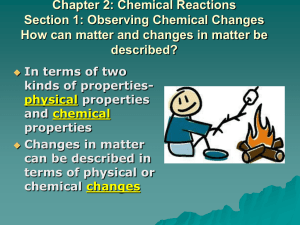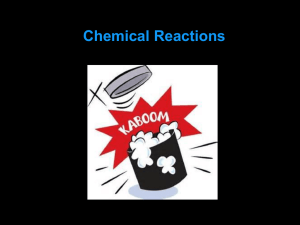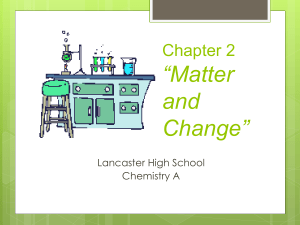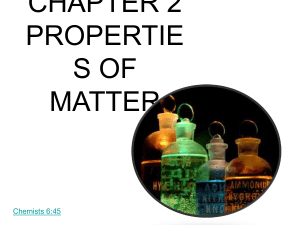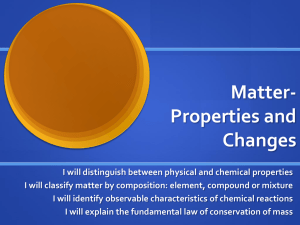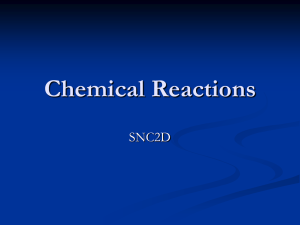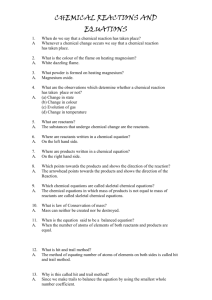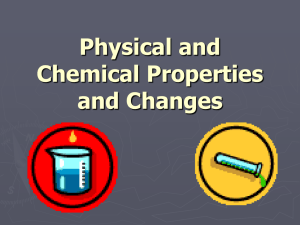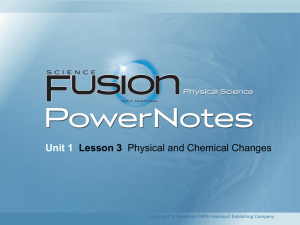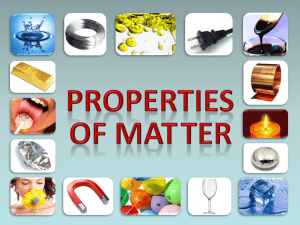Chemical Reactions PPT
advertisement
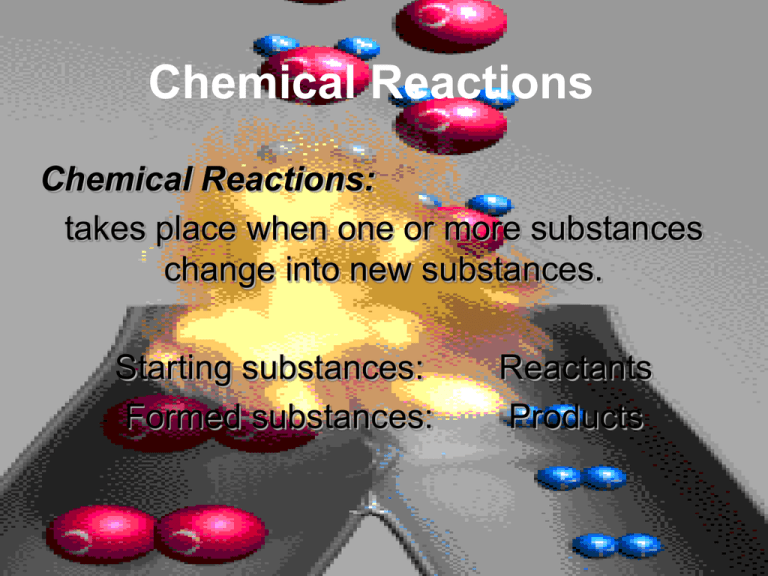
Chemical Reactions Chemical Reactions: takes place when one or more substances change into new substances. Starting substances: Formed substances: Reactants Products Chemical Reactions • Chemical Property: the ability of a substance to undergo a chemical reaction and form new substances. A chemical change always results in a change in chemical composition • Examples: burn, rust, decompose, ferment, explode, corrode Reactants Iron and Sulfur change into, produce Products Iron sulfide Reactants Iron and Sulfur change into, produce Chemical Reaction Products Iron sulfide Chemical Reactions • Energy is always absorbed or given off in a chemical reaction • Evidence of a chemical reaction: change in color or odor, gas or solid formed from a liquid, irreversibility of a reaction • Conservation of Mass: in any physical or chemical reaction, mass is neither created nor destroyed; it is conserved. • Mass of Product = Mass of Reactant Examples of Chemical Reactions • A silver spoon tarnishes. The silver reacts with sulfur in the air to make silver sulfide, the black material we call tarnish. 2 Ag + S Ag2S • An iron bar rusts. The iron reacts with oxygen in the air to make rust. 4 Fe + 3 O2 2 Fe2O3 • Methane burns. Methane combines with oxygen in the air to make carbon dioxide and water vapor. CH4 + 2 O2 CO2 + 2 H2O • An antacid (calcium hydroxide) neutralizes stomach acid (hydrochloric acid). Ca(OH)2 + 2 HCl CaCl2 + 2 H2O • Glucose (simple sugar) ferments to ethyl alcohol and carbon dioxide. The sugar in grapes or from grain ferments with yeast to make the alcohol and carbon dioxide. The carbon dioxide is the gas that bubbles out of beer or champaign. C6H12O6 (glucose) 2 C2H5OH (ethyl alcohol) + 2 CO2 Review Physical or Chemical Change • • • • • • Cookies are baked Water boils Salt dissolves in water A firefly emits light Milk spoils A metal chair rusts • • • • • • Chemical Physical Physical Chemical Chemical Chemical Review State the difference between a physical and chemical change • In a chemical change, the chemical composition of the reactants changes as product(s) are formed. In a physical change, the chemical composition of the substance remains the same even if its physical appearance changes • In a physical change, the chemical composition of the reactants changes as product(s) are formed. In a chemical change, the chemical composition of the substance remains the same even if its physical appearance changes Review • State several physical or chemical properties that could be used to distinguish between each of the following pairs of substances and mixtures • Gasoline and Water • color, odor, reaction upon heating, boiling point • Copper and Silver • color, melting point, reactions with other substances, hardness, brittleness, strength • Water and Salt Water Solution • boiling point, freezing point, density Review Which properties are physical and which are chemical? • • • • • • • • • • • Reaction upon heating Color Odor Boiling point Melting point Hardness Reaction with other substances Brittleness Strength Freezing point Density Physical • Color • Odor • Boiling point • Melting point • Hardness • Brittleness • Strength • Freezing point • Density Chemical • Reaction upon heating • Reaction with other substances
